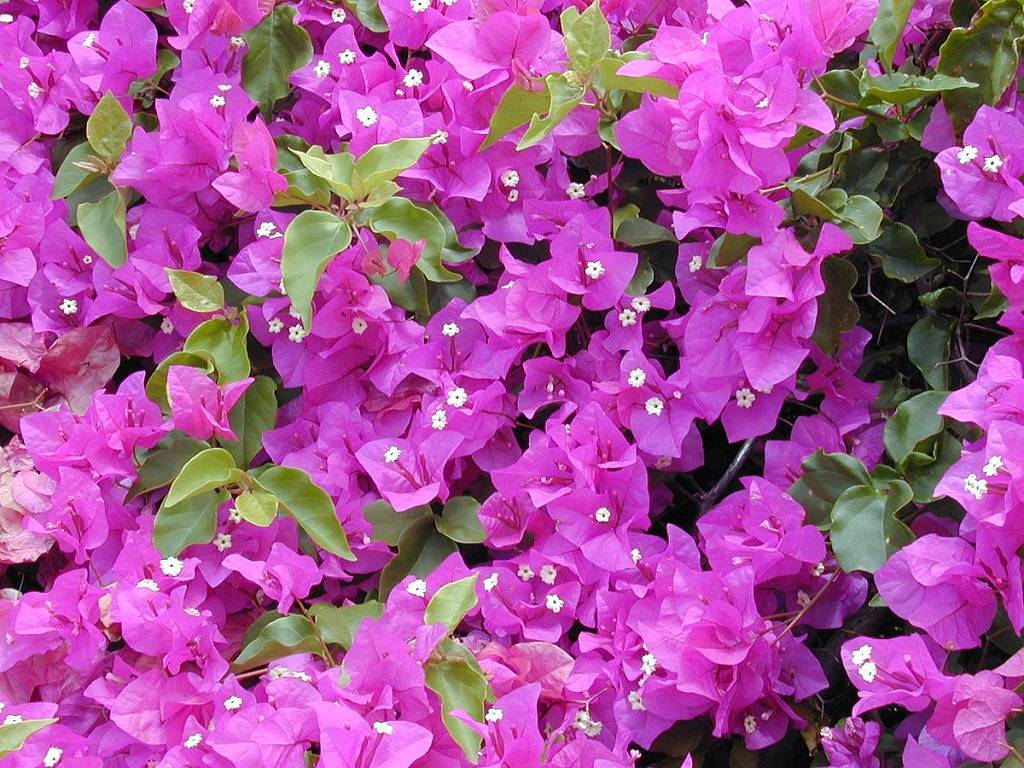
Bougainvillea plants are native to South America and typically thrive outdoors in full direct sunlight. However, they thrive in the Indian climate as well. Once firmly planted, this abundant beauty can tolerate dryness and attracts helpful pollinators like butterflies and hummingbirds. You can find the bougainvillea in most retail nurseries. Although the bougainvillea is beautiful to look at, you’ll want to be careful when you interact with the plant. It's known for its nail-like thorns!
Here are a few popular varieties of bougainvillea:
Barbara Karst (most popular): The Barbara Karst bougainvillea is a hybrid with spectacular, vividly colored leaf structures (bracts) that surround small white blooms and range in color from crimson to magenta. This bougainvillea flowers all year long and, with assistance, may reach heights of 40 feet and dry environments are excellent for it.
San Diego Red: One of the most robust and cold-tolerant and considered to be very hardy. The San Diego Red bougainvillea has lipstick-red bracts that are most vibrant in direct sunlight. Although still resistant to dryness, this bougainvillea can withstand more moisture than the Barbara Karst.
California Gold: The golden-yellow bracts that encircle the small, cream-colored blooms make this bougainvillea a blossoming machine. The California Gold benefits from tying for added support because it is not a sticky climber. This bougainvillea may be cultivated inside and prefers wet, well-drained soil.
Imperial White: The Imperial White bougainvillea, sometimes referred to as the Imperial Thai Delight, has bracts that originally appear white but are actually pale pink. This bougainvillea may be cultivated inside and prefers wet, well-drained soil.
Planting & growing bougainvillea:
The plant may be cultivated in the ground or in a pot, but as it tends to grow tall, a big container is required if you want it to bloom to its maximum potential.
In order to allow them to climb, many people choose to plant vining cultivars against trellises or walls. When they grow large enough, bushier kinds frequently make excellent hedges.
While the majority of bougainvillea cultivars require a lot of hot, direct light and air movement to grow, some may be kept indoors. If you're growing yours inside, be sure to put it in a sunny area with soil that drains properly.
Caring for the plant
Sunlight needs:
Bougainvillea enjoys being outdoors, and direct sunshine is ideal for them. The plant will spread out and become extremely bare-looking when planted in a shaded area. It doesn't have the most appealing appearance!
The plant often sheds its leaves and blooms as the weather drops, and if it drops below freezing, it may even decrease. Those who reside in colder climates might wish to choose types that can flourish inside.
Water needs:
Bougainvillea doesn't require a lot of water because it can withstand droughts. However, the time of year will have an impact on how often you water your plant. It must maintain a little bit more moisture during warmer weather.
Watering your bougainvillea once or twice a week is often a good idea if it's in a pot. You should regularly inspect the soil of an object buried in the ground to see whether it genuinely requires water. Before giving it a good soak, make sure it feels completely dry to prevent root damage and overwatering.
Soil needs:
Bougainvillea requires well-draining soils, whether they are grown in pots or on the ground. The soil may stay overly moist and destroy the roots of the plant if the water tends to pool or linger above the ground before soaking in.
















